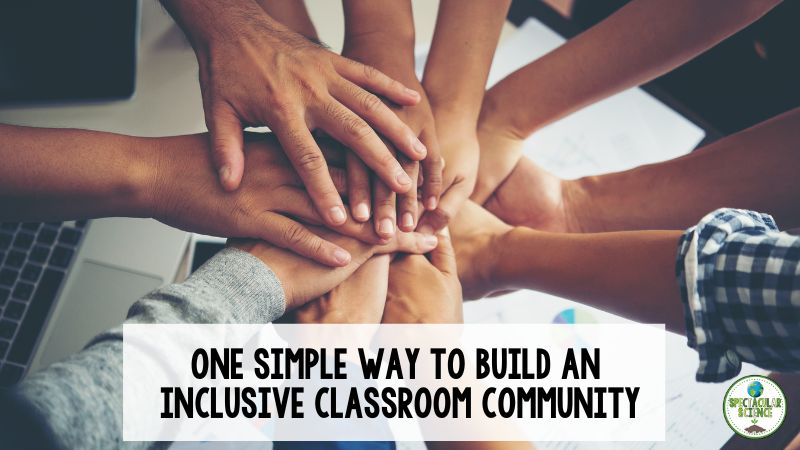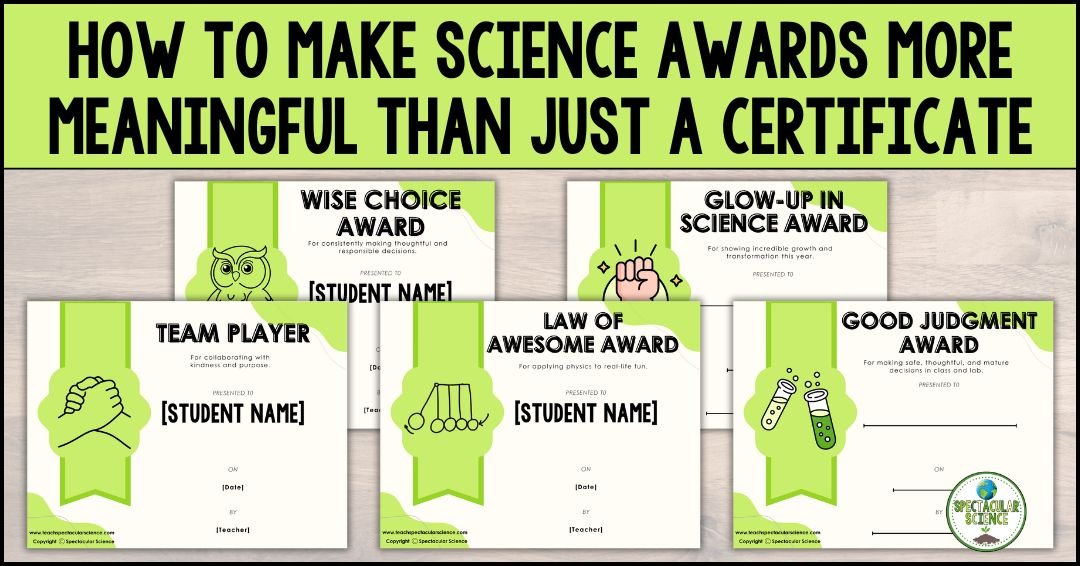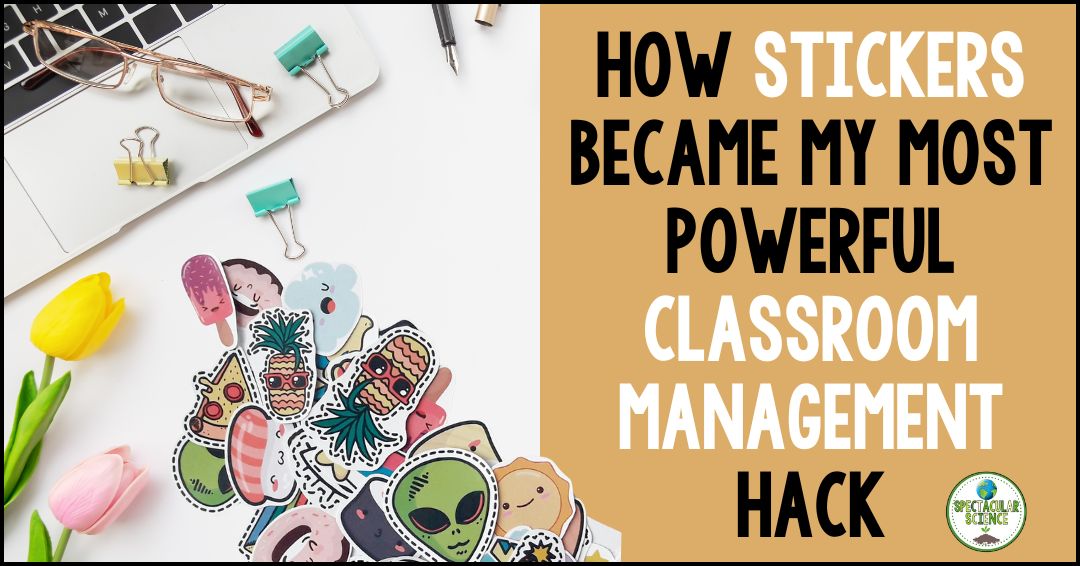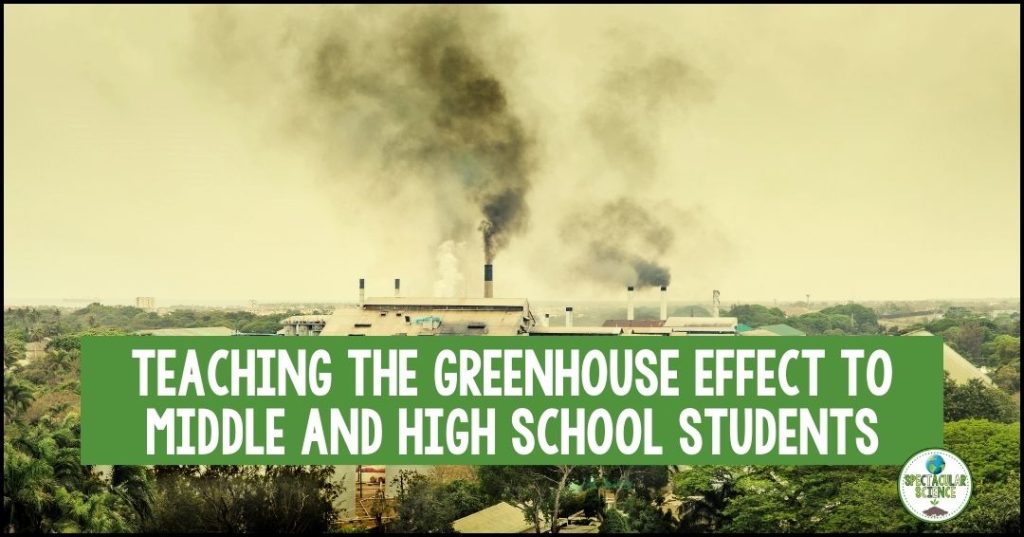
As science teachers, one of our most important tasks is to convey complex scientific concepts in an engaging and accessible manner. Among these, the greenhouse effect stands as a cornerstone of climate science and environmental studies. Explaining it effectively to middle and high school students can be both challenging and rewarding. Let’s explore strategies and resources to make teaching the greenhouse effect an engaging and enlightening experience for your students.
step 1: start with the basics
Begin by ensuring that your students have a solid foundation in the fundamentals. Before diving into the greenhouse effect, make sure they understand concepts like energy, heat, and the Earth’s atmosphere. Use analogies, hands-on activities, and simple experiments to illustrate these ideas.
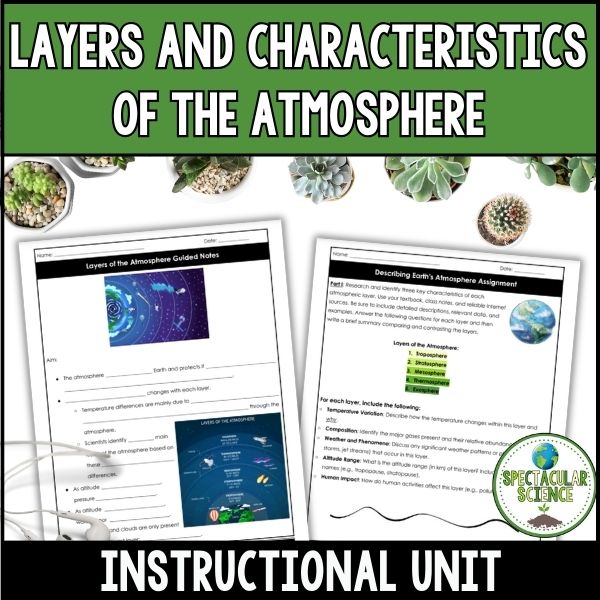
In my classroom, I take some time to focus on the following essential question: “How do scientists describe the composition of Earth’s atmosphere?” This no-prep unit includes everything you need to teach your students the basics of the atmosphere.
step 2: The Greenhouse Analogy
The term “greenhouse effect” is often misunderstood. To clarify, explain that it’s more like a cozy blanket than a glass greenhouse. Compare the Earth’s atmosphere to a blanket that traps some of the heat from the sun, allowing our planet to maintain a comfortable temperature. Visual aids such as diagrams, animations, or even physical models can help make this analogy more concrete.
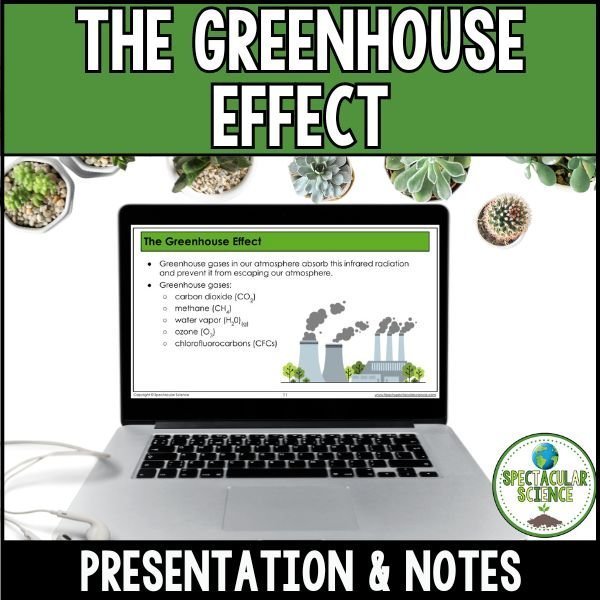
This presentation focuses on the following essential question, “How is the earth’s atmosphere similar to a greenhouse?”
The following topics are highlighted throughout the presentation: the greenhouse effect, earth’s atmosphere, how a greenhouse works, types of radiation, the electromagnetic spectrum, greenhouse gases, the warming effect, balance in nature, consequences of warming, global warming vs. climate change, melting ice and sea level rise, mitigation and adaptation, renewable energy solutions, individual actions that matter, etc.
step 3: Carbon Dioxide and Other Greenhouse Gases
Introduce the key players in the greenhouse effect: greenhouse gases like carbon dioxide (CO2), methane (CH4), and water vapor (H2O). Discuss how these gases, when present in the atmosphere, absorb and re-radiate heat, which helps keep the Earth warm. You can use experiments with infrared thermometers or online simulations to demonstrate this concept.
Incorporate an eye-opening greenhouse effect demonstration to captivate your students’ curiosity. Try this simple yet effective experiment:
- Set up two identical glass containers, one filled with regular air and the other with a mixture of air and carbon dioxide (CO2).
- Place them in direct sunlight, and as the day progresses, monitor and record the temperature inside each container.
- Your students will be amazed to see that the container with CO2 will trap more heat, simulating the greenhouse effect, and showcase firsthand how certain gases in the atmosphere can influence our planet’s temperature.
This hands-on experience will leave a lasting impression and reinforce their understanding of this critical environmental concept.
step 4: Human Activities and the Enhanced Greenhouse Effect
Connect the dots between human activities and the enhanced greenhouse effect. Discuss how the burning of fossil fuels, deforestation, and other human actions release extra greenhouse gases into the atmosphere, creating a thicker “blanket.” Use real-world examples and statistics to illustrate the impact of these activities on global temperatures.
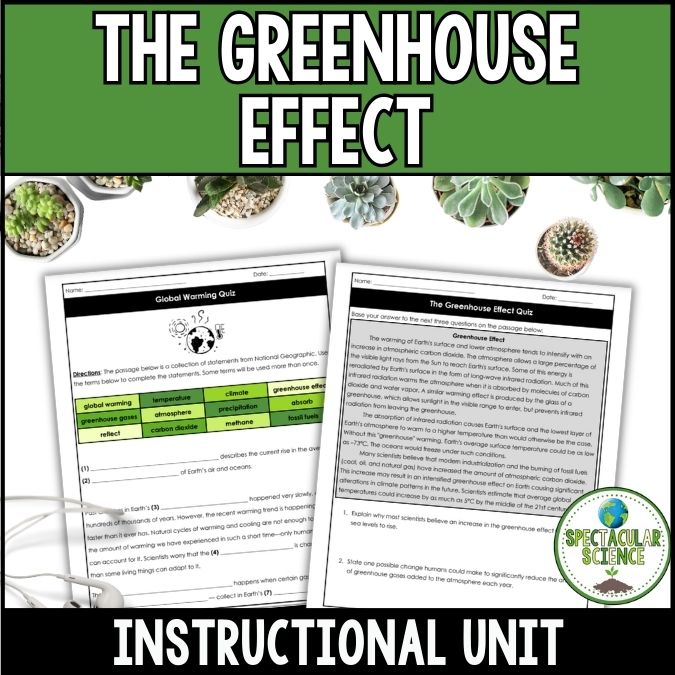
Throughout this no-prep unit, students study the following essential question, “How is the Earth’s atmosphere similar to a greenhouse?” Topics covered include greenhouse effect, shortwave radiation, visible light, long wave infrared radiation, carbon dioxide, methane, water vapor, global warming, etc. Incredible visuals and examples are provided to broaden the key ideas of this lesson.
The following resources are included in this unit:
- Unit Pacing Guide
- Greenhouse Effect Lesson Plan
- Greenhouse Effect PowerPoint Presentation & Guided Notes
- Greenhouse Effect Practice Worksheet & Answer Key
- The Greenhouse Effect Case Study & Answer Key
- Greenhouse Effect Quiz & Answer Key
- Global Warming Quiz & Answer Key
step 5: The Consequences of Global Warming
Help students understand the consequences of a warming Earth. Discuss topics such as rising sea levels, extreme weather events, and shifts in ecosystems. Encourage critical thinking by asking questions like, “How might these changes affect our lives?” or “What can we do to mitigate these effects?”
Of all the environmental issues, global climate change may be the one that will have the greatest impact on our future.
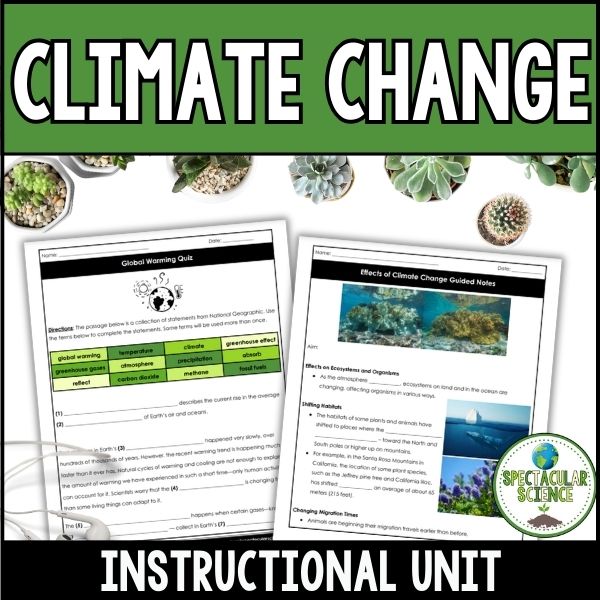
This highly-engaging unit challenges students to research the following essential questions:
- “What factors determine Earth’s climate?”
- “What are the effects of climate change?”
- “How can we respond to climate change?”
step 6: Climate Solutions
Empower your students by discussing potential solutions to combat global warming. Explore renewable energy sources, energy efficiency, and sustainable practices. Encourage them to brainstorm their ideas and research ongoing initiatives.
This student-favorite project affords students the opportunity to act as marketing executives. Their goal is to to develop an ad campaign to sell an alternative to fossil fuels. With the growing desire to switch from nonrenewable to renewable energy sources, how can we decide which energy resource to use?
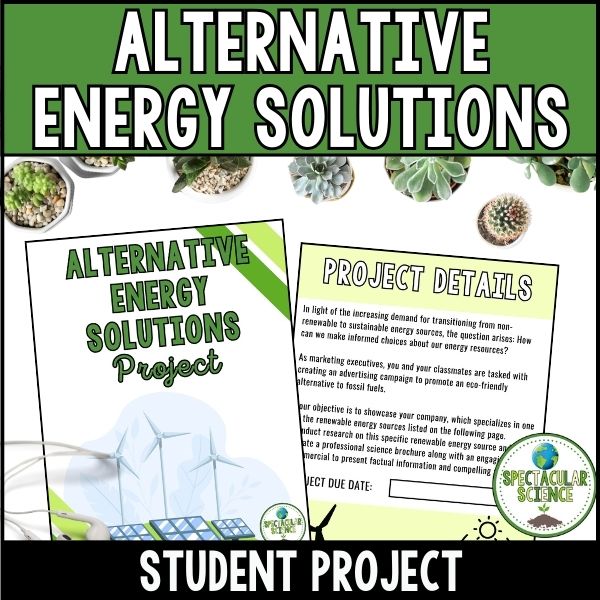
Students are required to produce an infomercial and informative flyer aimed at potential buyers. The audience needs to understand how the particular energy source works and how much energy will be produced, otherwise they will not want to invest!
step 7: Engaging Activities
Make learning about the greenhouse effect fun and interactive. Organize debates on climate change policies, create a mini greenhouse experiment, or have students conduct research projects on climate-related topics. These activities not only engage students but also deepen their understanding of the subject.
step 8: Real-World Examples
Showcase real-world examples of individuals and communities taking action against climate change. Share success stories of renewable energy adoption, reforestation projects, and climate activism. These stories can inspire students and help them see the positive impact they can have.
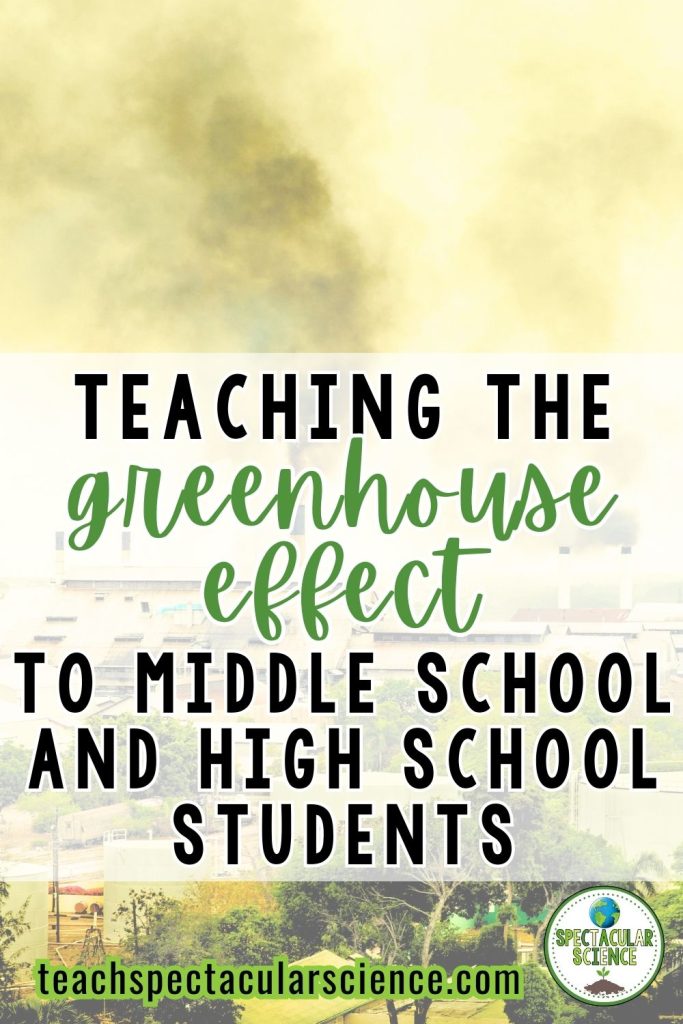
Final words
Teaching the greenhouse effect to middle and high school students is not just about conveying scientific facts; it’s about nurturing a sense of responsibility for our planet’s future. By using engaging teaching methods, real-world examples, and encouraging critical thinking, you can empower your students to understand the complexities of climate change and inspire them to be part of the solution. Together, we can raise a generation of environmentally conscious citizens who are ready to tackle the challenges of our changing world.










